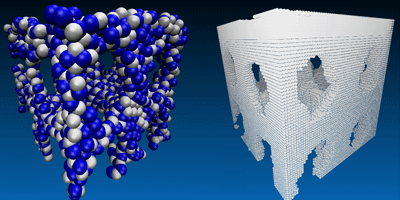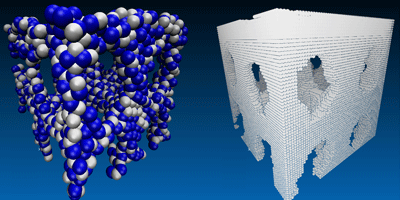Italian Delicacies Served Up in a Neutron Star Crust
The matter in the outermost layer, or “crust,” of a neutron star (the remnant of a supernova) is believed to host a variety of phases in which dense regions of nucleons are filled with voids of lower density. The presence of the phases, euphemistically referred to as “nuclear pasta” because of their resemblance to the shapes of lasagna, gnocchi, and spaghetti, may affect the emission of neutrinos, the primary mechanism by which the neutron star cools. In Physical Review C, Claudio Dorso of the University of Buenos Aires, Argentina, and colleagues report that a set of topological and geometric descriptors can accurately identify each pasta phase predicted by dynamical simulations, a labeling scheme that could be used to directly map the shape of a pasta phase to its effect on neutrino emission and neutron star cooling.
Dorso et al. classify a particular pasta phase by defining its volume, area, mean curvature, and its Euler characteristic—a number that represents the phase’s topology. Although pasta phases have long been studied theoretically, the authors’ calculations are some of the first to use a classical molecular dynamics model that is consistent with low- to medium-energy nuclear reactions. Moreover, they make no initial assumptions about the phase structure, which should help clarify the balance of forces and parameters that lead to the formation of each phase. – Joseph Kapusta





